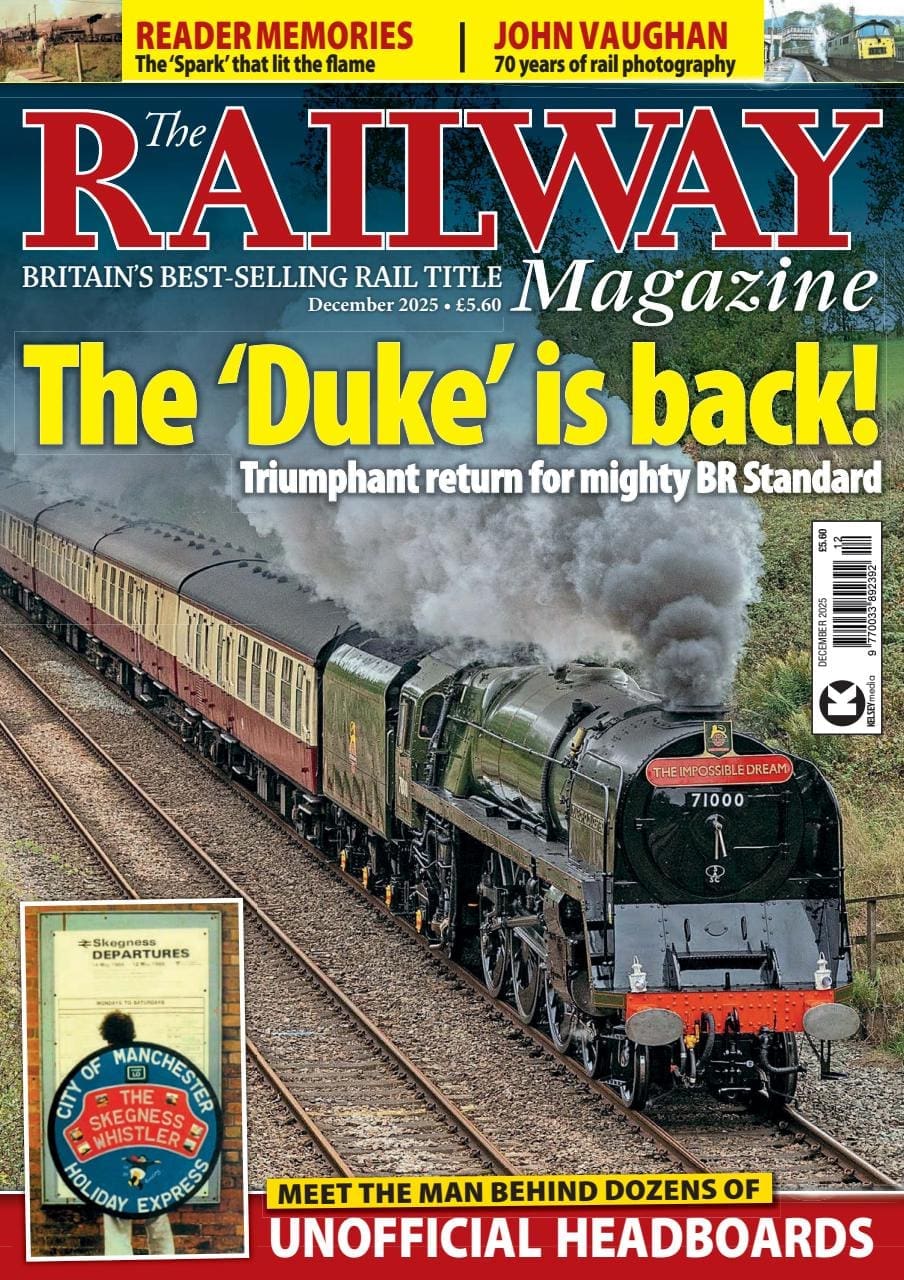Nick Leather, the BAFTA-winning writer of new BBC series Nightsleeper, talks to Alex Bestwick about designing a fictional rail service, playing with train sets at work, and getting the real voices of familiar rail station announcements involved.
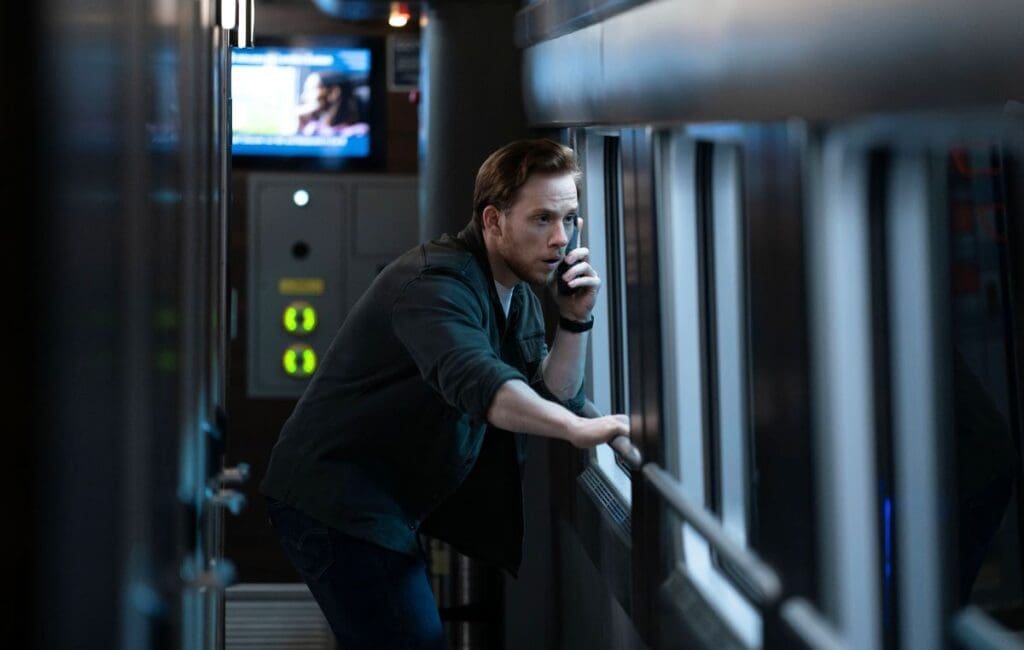
BAFTA-winning writer Nick Leather describes his new BBC thriller Nightsleeper (coming to BBC iPlayer on September 15) as a 21st-century Murder on the Orient Express meets 24 and Speed. The six-part series follows a ‘hackjacked’ train driven through one single night from Glasgow to London on an uncertain journey. Starring Joe Cole (Peaky Blinders) and Alexandra Roach (Utopia, No Offence), Nightsleeper is part fast-moving heart-in-mouth action-adventure and part twisty-turny whodunnit detective story where no-one is ever quite who they seem.
The show centers around a fictional London to Glasgow sleeper train, The Heart of Britain. I had the chance to watch the first two episodes of the show before sitting down to talk with Nick Leather about how he kept his fictional train service grounded in reality, the experience and challenges of working on the show, and how the show came about.
From the history of steam through to 21st century rail transport news, we have titles that cater for all rail enthusiasts. Covering diesels, modelling, steam and modern railways, check out our range of magazines and fantastic subscription offers.
What is Nightsleeper about?
Nightsleeper is about the attempted hacking of the Glasgow to London overnight sleeper train and a government agency’s attempt to intervene. The big question is: can two people who’ve never met in the real world, one on the train and one not, work together, establish enough of a bond, to save the lives of the passengers on board and stop the train from reaching what could literally be its final destination?
Where did the idea come from?
I’d always wanted to do a real-time show, and so I sort of had that in my head. I was looking back thinking, “when did I first come up with it?” It’s more than seven years ago, that’s how long we’re talking things being around, so it’s a crazy length. But I’d always wanted to do a real-time show, and I’d always wanted to do a hacking show, because the hacky world felt to me to be very of today. You’re always looking at what is the show that could only be done now? And I thought if I put those things together, that could be fun.
But my problem was sometimes with hacky shows or hacky ideas, it’s almost too big. When you see a cyber attack on something on the news, it’s kind of too big to dramatise, isn’t it? If there’s an attack on the National Grid or something like that. So I was looking at the various things to attack and thinking how could we put that into a precinct. So the idea was if there was an attack on the UK rail network, then we could actually localise it onto one specific train. It would almost be a very 21st-century Murder on the Orient Express. We could get 24, we could cross it with Murder on the Orient Express, we could have a bit of Speed, and we could wrap all these things together and make it into something hopefully very different for a TV series.
Once I started thinking about that, I loved the idea. I’m thinking if we’re trying to come up with a 6-part TV series, I love the idea of doing a train journey that is about 6 hours, and doing that in real-time. I love the idea of taking someone from where you get on to where you get off. Whether you’re really into trains or whether you just use trains, we all talk about them, it’s such a go-to for us. The trains and the weather, that’s what we like to talk about and moan about, isn’t it? And I don’t think I can do the weather show, but I can do the train show. So I love that idea of starting in one place, finishing in another, and going to a lot of crazy places storywise and geographically on route.
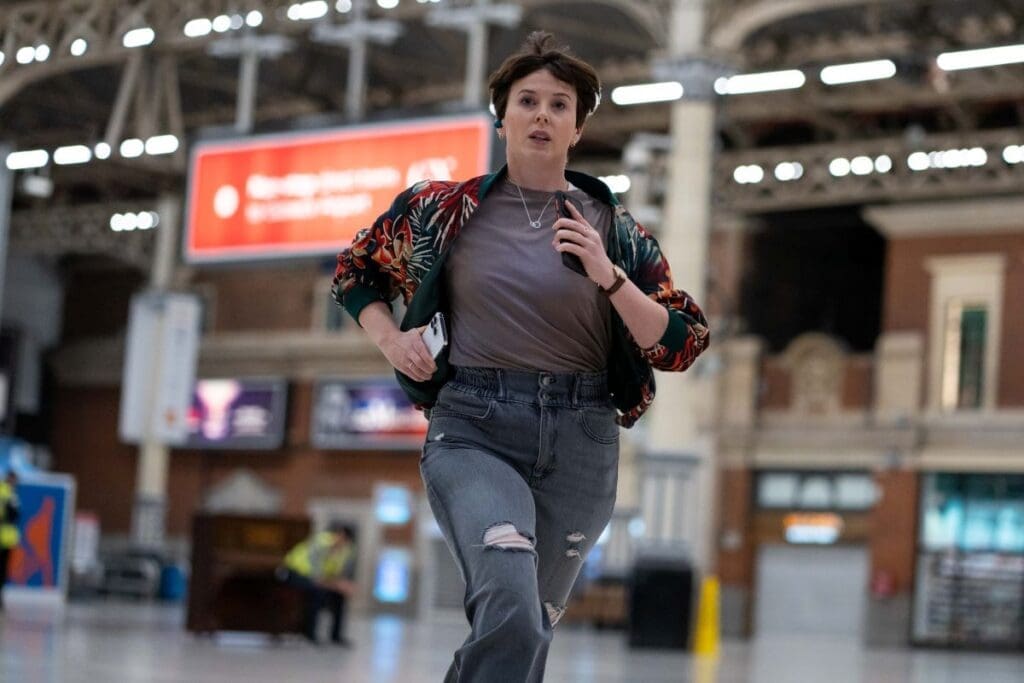
What attracted you to the real-time premise?
It’s fun, isn’t it? Once I’d come up with it, I was looking at what are the longest journeys we can do in Britain? I’d never at that time got the Glasgow-London Sleeper, and so I was looking at that and I was looking at the Cornwall Sleeper that goes from there. So I went on the Caledonian Sleeper and I just thought “this is so great.” I loved everything about it. I didn’t know that it was going to be a different kind of train, I didn’t know that there was going to be that club lounge and all that business and I thought “this is actually a great setting for a show.” I even loved the fact that you had the seated carriage and we would have this mix of characters. To write a story, whatever world you go in, often you have characters from one world, and I really liked the fact I could have characters from different worlds and trap them together, and see how they reacted. Some would get on, some absolutely wouldn’t get on. I liked that idea, I thought that’d be fun.
The train almost becomes a character in itself, is that something you set out for?
Absolutely, yeah. I took the idea to Euston Films and Kate Harwood at Euston Films was very enthused straightaway, and they sent me back on the Caledonian Sleeper. I ended up getting it a few times and thinking about it. You’re thinking, “well, we want to have a fictional train and a fictional network, so what would it look like?” I really enjoyed that bit, I think I’m train-y enough to enjoy the creating of a train. I really wanted to get into it enough that we knew what the locomotive was, that we knew what the carriages were, that we knew what that service was called. It became something that felt very real, and I found that fun, creating that. So my Network Rail map has gone now from the wall, but I did have the map of all the train lines in Britain on the wall for a long time, but I’ve still got the train behind me here, that’s our plan of the train. I love it when someone draws this out and I know where every cabin is and everything, because it just becomes something you can play with, from a story point of view. At one point we were in story room and there was me and the director and the producer, and we had a train set, and we were sat on the floor playing with the train set. I swear down, it was work! And we’re actually talking about what we can do and how a stunt might happen. They took photos of us and it didn’t look like work, it looked like play. I thought, “maybe this is my perfect day’s work, just to sit and play with the train.”
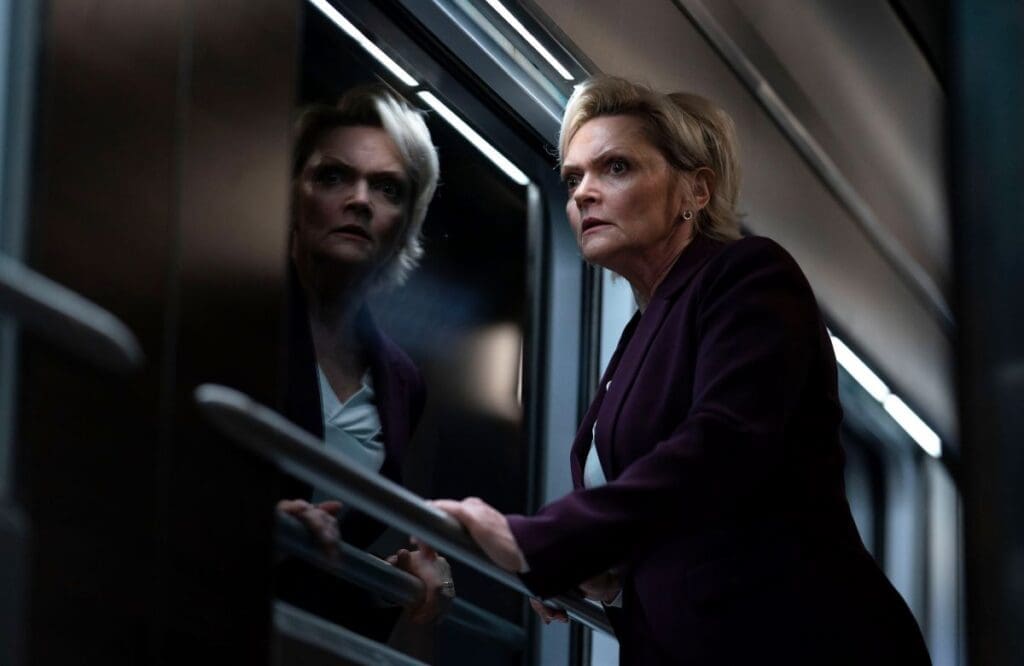
A lot of the show takes place on the train. Did having such a narrow setting create any challenges?
I didn’t worry about it… It was for the director! The director hated that bit! I hadn’t really thought about that, and then when I went on the Caledonian Sleeper, I was really struck by how narrow the corridor was. The very first time I set foot on that train, I walked down the corridor, someone’s coming the other direction, and I had to walk all the way back again to let them past. I love that from a story point of view, because it forces characters together, doesn’t it? There’s literally no way past, there’s no way to ignore each other. You’ve got to make eye contact, you’ve got to speak to each other.
So I write that very happily, no worries at all, and then the director says, “how am I going to do this? Where am I meant to put my camera?” So I leave them to sort out those worries. I think there’s a bit of camera trickery that then goes on to literally choreograph it and make everything happen.
We properly did build half the train, and it has got a roof on it, it’s not like there’s no ceiling there to film from above. We built it because we wanted it to be able to use the reflections and everything like that. So it’s definitely a shooting challenge, but really exciting to actually go on it and it looked… You’d think you were on the Caledonian Sleeper, or our version of it. It’s was absolutely convincing, and then suddenly you go to press the button to open the door and you realise this doesn’t work. Actually, in a scene where that happened you suddenly realise that there’s three guys at either side who have to open the doors as smoothly as they can, like it’s some sort of electronic thing. Slightly spoils the magic, but other than that…
That must have been pretty surreal.
It’s funny, when I was writing it I didn’t really think about how they were going to film it, but as much as I had thought, I thought it would be green screens outside. But what they did is they got these screens – volume walls, it’s the kind of things that they use on all the Star Wars series now, these very high-tech things. What it means is they then filmed the route before we started, the route that we’re going to take. So it’s not something that you add later on. In real time, as they’re filming a scene, as they’re looking out the window, that view is there. It’s not just any view, it’s the place that they’re talking about actually going past the window. These people come along and plug it in and make sure it goes at the right speed, the world passes at the speed at which the train is travelling, and the first time I saw it I thought “god, this looks amazing.” On the train, you actually feel like you’re moving. I didn’t know whether it was just me, and then at the end of the first day, three of the actors felt travel sick. Never moved from a warehouse in Glasgow. You just think “wow, that means it’s working then!” It’s amazing how disorientating that is, how much it tricks you. So I love the fact it is that real world outside. And in terms of the trains, because I had that map on the wall and started thinking about the story and how playful we could be… No spoilers, but we could stay on the West Coast Mainline, but then it started to occur to me when looking at that map, actually we can go anywhere… Because if we’ve hacked the UK rail network and we have our train, then it suddenly becomes fascinating to me. Where could we go? We’ve got the whole country to go at here. So I hope people will enjoy that element of it.
How much research was involved?
I didn’t know if it was possible, I didn’t know if the end result of my first phone call would be “you can’t do that, that couldn’t happen for this reason.” So what we did is, what Kate the executive producer did, we got three people in a room. We got a train expert, we got an ethical hacker – have to make sure I say the word ethical! – and a cyber specialist who specialises in infrastructure, and we got them together in a room, put this scenario to them. And I was hoping that they would just see what is possible and what we could do and cut the cloth accordingly, and basically they chatted for an hour and after an hour they went “yeah, we could do this between us.” And I thought, “alright, that’s good storywise, but I’m a bit scared now.” So it was obviously great to have them, because they said, “we could do it, but if the train was built like this, if the network did this, if the hackers have managed to do this…” So it gave me the list of things that I needed to make happen.
Then in terms of working with the train people, Gareth Dennis I worked with. You worry everyone’s going to be watching it and everyone who’s into trains is going to be watching it and that you’ve got to be spot on, but he said, “I think people will really enjoy it if you make sure you do know your stuff a bit, and also if you play around with it, if you use things and you change things.” So that’s why I start off by saying about the construction of the train. Once we established this Heart of Britain service, it was going into what do we want the train to be? It was this idea of a Class 94 bi-modal locomotive, pulling half a dozen Mark 6 carriages. We wanted to fictionalise our locomotive and our carriages, but he said hopefully people would enjoy that once we make it into an authentic thing for our fictional world. We can play around with the sort of things that people who do have that extra level of knowledge, there will be some rewards for them seeing yeah, we did get into it, we enjoyed it.
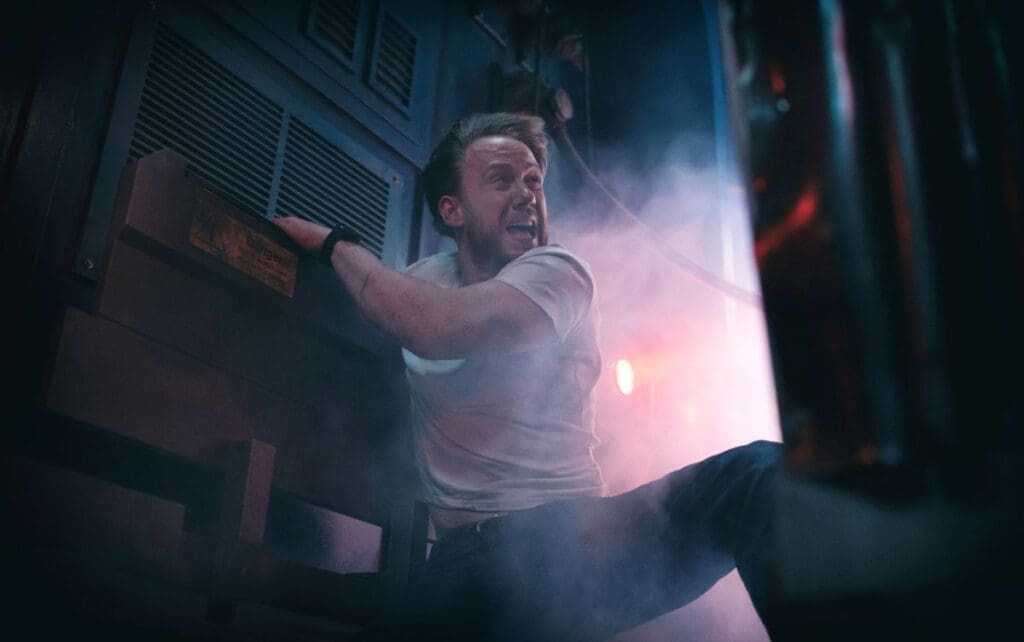
Where did your interest in trains begin?
I’m from Newton-le-Willows, which is a train town. It’s on the Liverpool to Manchester line, Stephenson’s Rocket went through there, and my grandad built trains. In Newton, there was something called the Vulcan Foundry that made train engines. Actually Robert Stephenson at one point was the director of that, so properly there since the beginning of the railways. I think everyone in my hometown, half their grandads worked there and built train engines. It’s very much part of you, I think you just have a bit of affection for trains. Very close to where I was brought up you have the Huskisson Memorial for William Huskisson, the MP, who was actually the first person hit by a train, killed on the first day. I was always fascinated by that, and the way we’re all resistant to change and the way on that first day people went “it’s a death trap! Look, someone’s dead already! We don’t want to do these trains, it’s terrifying!” I was always fascinated by that.
So coming from a train town I’ve always had that affection, a bit of love for them. Spent a lot of time on the Liverpool to Manchester going one way or another. When I came to write it, the idea of a train just feels so British as well, it is our thing, isn’t it? The thing we all know so well.
Another thing, once I then get into trains and into the writing of it, you start writing the train stations and the announcements, and I was saying, “well, who is the actual person who does the announcement?” I start googling and I see there’s all sorts of forums where people are discussing this and trying to work out who it is. And we said “can we actually get them? Can we get the real people rather than actors?” So we did get the real people! Quite difficult to find them and get them, we got Atos Anne, the woman who says, “See it. Say it. Sorted.” And then we get Matthew, who does the trains, but also he’s the voice of the Tube and everything, “mind the gap.” So for me, once you get into it, it just becomes so enjoyable, to know that they’re working on it. I think one of them is even going to do some continuity announcements for the BBC around the launch, just to make it more fun.
I did think it sounded really authentic!
Now you know why. We were having to try and persuade them, as it goes on and their voices have been distorted by the organisation behind it, we’re having to make them say increasingly sinister things. They seemed to really take to it, to be honest.
It’s funny, isn’t it, especially for Anne, when she first did it, did she know how significant her voice was going to be? I wonder if she really thought it through, and her voice has been there for years and years and we do know it, even without thinking about it, I think everyone would recognise that voice. It’s funny really, it’s part of our lives.
Can you tell me about an interesting train journey that you yourself have been on?
Talking about the Manchester to Liverpool line, I’ve been from Newton-le-Willows to Manchester a million times. As I say, on the same track as Stephenson’s Rocket, and once I was on it and it broke down. We were stuck for hours on the line and when you were asking me at the beginning about the idea, when this came to my head, it was stuck in my mind what happened there. Almost everyone who’s ever got a train at some point must have been stuck on a line, and quite a lot of people have been unfortunate enough to be stuck on a line for a long time. It’s really interesting to me, the way relationships change, and the way you kind of keep yourself to yourself for a long time, but after a certain amount of time passes you might actually speak to the person next to you, share a bit of frustration. So this happened that time when I was on the train line and we’re stuck in the middle of Chat Moss, we’re really in the middle of nowhere, you’ve got nothing to see out the window, there’s no chance of escape, you’re stuck there. What fascinated me was after a bit people started to talk to each other, a bit longer two other people started to argue because one was playing music. After a bit longer someone who was on the way to a party got a bottle of wine out and just opened the bottle of wine and started drinking it, slowly getting more drunk. All these things from my own bad journey fed into the story in the end because I thought, “this is Britain. Someone is just going to get more drunk as it goes on.” These people are not all going to turn into heroes, some people are going to be a nightmare. It came from that journey, from spending about three hours stuck in the middle of Chat Moss with people who were at times not getting on, and then by the end, once you start moving again and you have that relief, some people almost have formed friendships. That fascinates me as well, the unexpected connections. You might have looked and thought that person might get on with that person. Actually, very different connections are made. So from a character point of view, the idea of taking this thriller that had elements of action-adventure and elements of whodunnit, but what I really love is the character side, the relationship side. On a train, when we’re all put together in these combinations, it’s interesting to see who gets on with who and who doesn’t.
All six episodes of Nightsleeper will be available to stream on BBC iPlayer from 15 September 2024.
